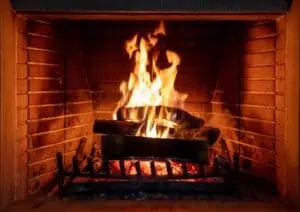How to Start a Gas Fireplace?
Gas fireplaces can make for a warm and inviting addition to your home. During the winter, these units are often preferred over traditional wood stoves because they can heat larger areas and provide greater energy efficiency. As long as you follow a few simple steps, it’s easy to start one of these units on your own.
(Looking for”All Valley Fireplace Repairs“? Contact us Today!)

To begin, remove the outer cover of your fireplace to access the pilot light and control panel. Most fireplaces are covered with a glass door or decorative panel that encloses the fire chamber and provides protection from the elements. You can usually open or remove these covers without breaking them.
Most modern gas fireplaces are equipped with a control panel that allows you to ignite and manage the flames. These controls are typically hidden behind a screen or decorative panel that you can open or remove for easy access to the unit’s ignition system.
Locate the control knob that reads “on,” “off,” and “pilot.” If the fireplace was previously on, turn the control knob to the off position, then wait at least five minutes to allow any lingering gas to disperse.
Push the ignition button, which is a red button, about once every second to ignite the pilot light. This process may take several attempts depending on how long it has been since you last used your fireplace.
Once the pilot light lights, keep holding down the ignition button for at least 30 seconds to ensure that the flame stays lit. This process is important to warm up the thermocouple and prevent it from overheating, which can cause damage to the appliance.
If your fireplace doesn’t have an electronic ignition system, use a long lighter or matches to light the fire. If you’re unsure how to use a lighter on a fireplace, consult the manufacturer’s manual for tips and guidelines.
After you have a light on, check to see that the media (logs or coals) in the firebox aren’t brittle or crumbling. This can affect the way your fireplace burns, and it’s important to replace these materials if they begin to break down or become disintegrated.
You can also clean the chimney and fireplace surround to ensure that they don’t collect debris or block airflow. It’s also a good idea to remove the cover and inspect the interior to ensure there are no cracks or rust spots that can prevent your fireplace from working properly.
Once you’ve inspected the interior and cleaned the chimney, you’re ready to start your fireplace. Most fireplaces have a shutoff valve attached to their gas line, so you’ll need to twist the valve until it is parallel with the line. If your device doesn’t have a shutoff valve, you can also twist the handle of a control knob until it is perpendicular to the line.
Next, you’ll want to turn the main control knob to the “Pilot” position. This will allow gas to enter the firebox and ignite the spark igniter near the knobs.

